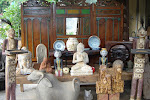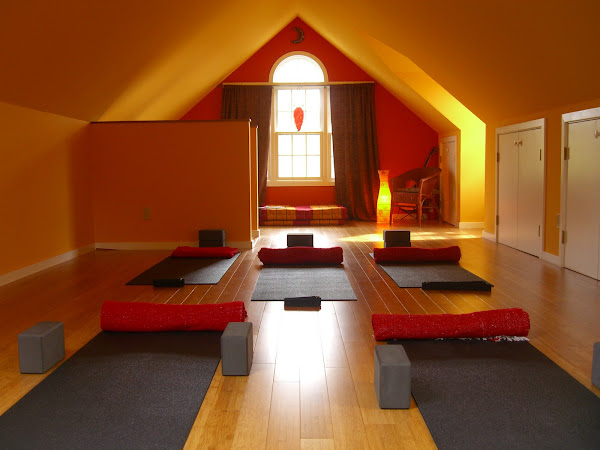
Oh wheel of my mind,
Be so steady, as my spine
Begins to recline
What is more stimulating than a good cup of coffee, a remedy for all things glum, and anatomically the absolute opposite of what you are doing right now?
Yes. Urdvha dhanurasana. AKA… the wheel pose.
Whether you are brand new to wheel or this is how you yawn yourself awake every morning, you can come to this pose with a beginner mind. This month, we’ll be exploring the wheel’s many anatomical aspects, turning the pose inside out, upside down, and right side round. Whether or not any of us actually find ourselves IN a wheel pose is beside the point actually. Because in yoga, the pose is never the goal - the journey is the goal. We’ll learn to lengthen our psoas muscles, make space for our sacrums, strengthen our triceps, and soften into a suppler spine. When we set our minds on these processes, we are practicing to be present and awake. We are learning to pay attention, thus creating a union of body and mind. We may even begin to feel that there is as much space inside us, as there is outside us, so inviting a sense of spirit to the mix.
Practice in your imagination now - then come to class and practice on the mat. (Remember: it is wise to begin any back bending practice with a warmed up body and an awareness of how to tuck your tail bone)....
Lying down on your back, begin to bend your knees, sliding your heels closer to your sit bones. Soften your feet into the ground. Lengthen your tailbone towards the backs of your knees, and continue this lengthening/tucking action as you raise your pelvis up toward the sky on an in-breath. To prevent your knees from splaying outward, roll your thighs inward toward each other. The action of the lengthening tail bone, together with this inward rotation of the thighs, helps to make room for your sacrum, thus protecting your low back.
Now, you are in bridge pose and already beginning to open up those psoas muscles that cross the fronts of your hips. You could stay there. You could even place a yoga block beneath your sacrum for support and have a seat right there. So much change is already occurring.
But to continue on to full wheel, place your hands alongside your ears, fingers facing the bottom of your mat. What matters here is that your elbows are pointing straight up, not splaying outward. By this time, it is very possible that you may have arrived at your edge. To attempt to rise up from here, if your elbows are splaying outward, could injure your shoulders ~ then I'd have to blog about rotator cuff injuries. ; ) Your practice becomes the work of opening your upper arm bones into more external rotation, as you draw those elbows closer together. Your practice also becomes the cultivation of patience.
If your elbows ARE facing straight up, then imagine that the outer folds of your arm pits are like walls, and so this is when you can urge those walls to fold inward toward your chest, helping to maintain the external rotation of your arms, and begin to press your hands into the ground, straightening your elbows and rising up on an in-breath. Check in on your wrists. Come back down if there is pain. You may be able to attempt coming up again, if you first place a rolled up towel beneath the heels of your hands, removing some of the “over” extension there.
And - Voile! You are in wheel. Be the wheel. : ) Continue to tune the wheel, finding the places you need to work less, the places you need to work more. Continue to tuck your tailbone. Notice if your ribs seem to be jutting out, and knit them back into your body. In fact, be LESS of a wheel by always looking to introduce elements of a forward bend into your backbend. You do this by drawing your hip points toward your rib cage and your rib cage toward your hip points.
See if you can stay up for maybe five luxurious breaths. Then as you descend from your wheel, continue to tuck your tailbone (basically, your brain should inhabit your tailbone for this entire process!) and to draw your elbows toward each other and your inner thighs toward each other. Continue to breathe. Always breathe. In fact, be more mindful of this practice, then anything else I have said thus far. The moment we begin to hold our breath is the moment we are no longer present and have set up the best possible scenario for injuring ourselves. Soooooooo...don’t do that. : )
And that was a very long trip into the dynamics of coming up into urdhva dhanurasana. But afterall, yoga is really all about the details.
Enjoy.
And please feel free to engage in wheel-talk, as well as all things round and beautiful, here at The Karma Garage.





4 comments:
I learned this lovely new idea at Om (a studio in NYC, where I was trained) yesterday. If you would like to emphasized the pressing down of your hands and feet when you come up into wheel, come up on an out-breath. Or you could emphasize the opening up and buoyancy of your body as you rise up - come up on an in-breath. It's interesting to explore both of these methods. Yesterday, I preferred coming up on the out-breath.
Ahhh....I LOVE this pose! I just got done doing it and while I don't think my wheel was very pretty - lol - it was surprisingly refreshing!
I have a question though. Should my weight be mostly over my hands and shoulders with most of the bend in my upper back? (Kind of pushing with my feet?) Or should my weight be more equally distributed over my feet and hands with more bend in the middle of my back?
Your weight should be as evenly distributed as possible. It is a backbend, and so your spine will take this curve, but you are really attempting to emphasize the bend at you HIPS and at your SHOULDERS (as if you could make yourself a square - you can't - but you try), thus taking as much of the backbend possible OUT of the backbend.
Most of us don't have a tremendous amount of mobility in this direction at the hips and shoulders, because most of us are doing what we are doing right now, sitting down with our hips flexed, shoulders about neutral, and spine possibly slouched (did you just straighten up? lol) at a computer. Then we try a wheel, and our spine is forced to compensate for that lack of hip and shoulder mobility by over arching. This can be so compressive to the back of your spine. Discs can get pinched. This is why we move so mindfully and why we warm our bodies up for this and why we continue to work on the opening up of our shoulders and hips.
I'm inspired to come back with some pictures of how to work on that shouder and hip opening. ; )
Just remember, Mya-Lisa - it's hip to be square. : )
generic propecia propecia gynecomastia - generic of propecia
Post a Comment